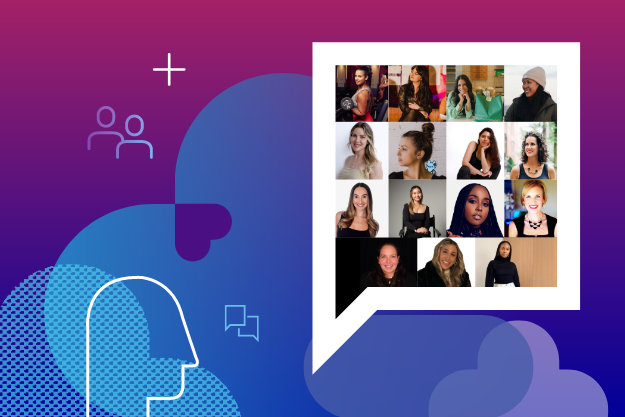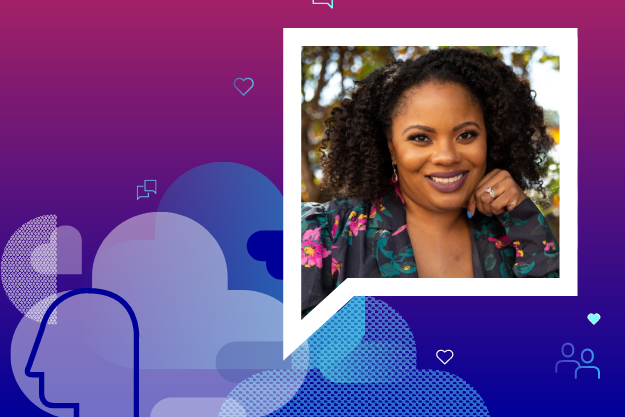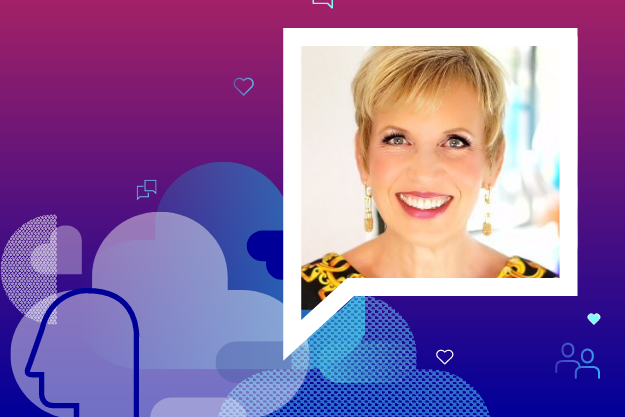Social media managers often feel disconnected from other parts of their companies, especially when working remotely or as a one-person team. At the same time, they’re tasked with shaping a brand voice and communicating its mission to the world, a critical element of marketing that works best in tandem with cross-departmental collaboration.
With an impressive background in consulting and in-house social media management, industry expert Robyn Nissim uses her skills to help organizations revitalize their marketing strategies by thinking social-first. We asked Robyn how social media managers can educate their colleagues about the importance of connecting social and other departments, and the potential benefits this inclusivity brings.
We’d love to get to know you! Tell me a bit about yourself, your background in marketing, and your current role.
I started my career in the agency world of advertising straight out of college at a direct mail marketing firm, which provided me with a results-driven approach. From there, I went over to the creative shop Chiat/Day. The word "Millennial" was trending at the time, and I’m a Millennial, so I was able to join meetings with marketing leadership and share some ideas about how to reach that audience. I was honest and said, "I’m not watching your TV commercials, I stream everything, and I have an ad-blocker. I'm absolutely addicted to social media. So if you want to find me, that's where I'm at."
I ended up running social channels for brands like Michelin and Nissan, using zero brand dollars. At one point, [popular electronic music artist] Deadmau5 was trending on Twitter for designing his Ferrari with a Nyan Cat wrap, and Ferrari sent him a cease and desist. I saw that and thought, “Why don’t we mock up a Nissan with that design and send it to him?” He retweeted it, and it resulted in the president of Nissan flying to Vegas to hand him the keys to a Nissan GTR, which he used in his YouTube videos. It generated endless amounts of free advertising — over 350 million impressions.
Shortly after that, I left the agency world and began freelancing (for the first time), and found myself in the influencer marketing space. I was connected with Ulta Beauty and I worked with them for 3 years before making the shift to the brand side, in-house as Head of Social at Anastasia Beverly Hills and Alo Yoga.
When I started at Alo, it was known as more of an affluent mom yoga pant brand. Bringing some personality and strategy into the mix, I was able to turn it into an It-girl, street-style, fashion, and lifestyle brand by growing our content strategy. We had shoots every quarter, influencer campaigns, brand ambassadors, events, and activations within our advocate community.
I started freelancing independently again, serving multiple clients at once, including Mattel Creations. This is Mattel’s newest sub-brand, catering to nostalgia while partnering with the tastemakers of today. I helped their team brainstorm KPIs, build out a strategy, and take that up the chain so the social team could keep it moving without being hindered by approvals. With my help, the brand grew its community by over 53% and engagement by 75%.
Now, I’m working on an offering that enables me to do execution as I collaborate with smaller brands who don't have everything set up.
Why is it important for other departments to collaborate with and communicate well with social media marketers at a brand? What are the main benefits?
Social media truly is the heartbeat of every business. It has to flow through the whole org. to gather information and determine what’s worth posting. To effectively operate like that, you have to be working cross-functionally — with every single department.
That includes brand marketing, creative, performance marketing, product teams, eCommerce, and digital teams who are in charge of revenue. You need to understand what their strategy is in terms of messaging and how their reporting is set up so that social media can be included and mirror their efforts.
Social and customer service are especially intertwined — community management is hard to keep up with when you're running so many different channels and posting content every day. A lot of consumers come to social to share questions and concerns, so having your customer service team locked in and able to respond for you is going to help in terms of loyalty and engagement. Plus, it paves the way for more personalized social interactions when you aren’t just copying and pasting answers from an FAQ document.
If you work in retail, meeting with your in-store team is also important. At Alo, I met with our retail team once a month to get feedback about what they were hearing from shoppers in person, which was helpful in informing our social strategy. When I say that social needs to be plugged into every single department, it really does in order to be successful.
How should small social media teams or single social media managers without lots of resources approach cross-team collaboration?
When you’re on a smaller social team or working alone, it's especially important to go far and wide throughout your org. It’ll be a lot of work up front, but you’re ultimately lessening your load. For example, you could…
Schedule weekly meetings with your email marketing team to see what the top-performing email content is and break that down into a bunch of bite-sized pieces of social content.
Connect with your creative and brand teams and ask them to give you a set of on-brand templates that you could pop into Canva and edit yourself.
Get your customer service team on board early so they can help with community management.
Touch base with your product team to make sure you understand all of your key selling points and reasons to believe so you can develop that story.
When you’re on a small team, it can be really hard to do this, but as soon as you start setting meetings with other people in your company, they’ll start thinking more social-first.
Get on their radar, share your strategy and how you’d like to work together, and eventually, they’ll start thinking about your channel and ways they can support you.
How would you encourage employees in departments outside of social to stay in the loop and support their social media managers?
Bring the social team in at the inception of an idea or once you’ve gotten approval to move forward with it.
So, for example, let's say the eCommerce team is getting ready to launch a sale or new campaign. As soon as they know that, they should loop in social to help with the messaging and rollout.
I've worked at brands where they tell me we’re having a sale and I need to promote it on the same day, and there’s no time to think about the best way to do that for our audience.
Ordinarily, I’d post something that I know is going to get a lot of engagement or warm them up with a tease of “something’s coming.”
Allowing your social team enough time to help support your initiative and bringing them into the fold is only going to make everything stronger as a brand.
What advice would you give to social media marketers looking to start improving cross-team collaboration?
The unwritten job requirement for a social media manager is to educate the organization about social media. That’s at least 20% of the job. It’s not only your job to come up with a strategy and execute it — you need to keep it well-rounded by taking the time to educate your colleagues.
Everyone has their own social media accounts, and a lot of people have an inflated sense of knowing how to “do social.” The reality is that running social media for a business and maintaining a personal account are two totally different worlds.
Stand your ground if you have a gut feeling your idea will work, and be sure to have examples to share when people start trying to poke holes in your strategy… but don’t copy another brand.
Be unique, educate your team and your audience, and stay tough. You can do it!
Connect with Robyn on LinkedIn and check out her website to learn more.









































